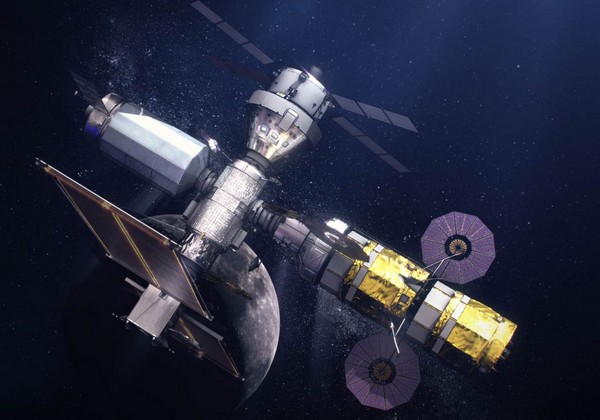Humans haven’t set foot on the moon since 1972—science, technology, and engineering have advanced leaps and bounds since then. NASA is hard at work to get humans back on the moon by 2024 with its Artemis lunar exploration program. Scientists and space enthusiasts all around the world are excited to use recent technological advancements to get back to the moon and explore more of our solar system.

Why the Name Artemis?
NASA doesn’t fool around when it comes to naming their rockets and missions—they’re almost always packed with symbolism and deeper meanings. The name Artemis comes from Greek mythology (as so many NASA missions do). Artemis, the goddess of the Moon, is the twin sister of Apollo. The name “Apollo” has held a special place in NASA since the 1960s and the original Apollo missions—it’s only fitting that the next phase in space exploration is led by his sister and protector of the Moon, Artemis.
This Is Just Phase One
Setting foot back on the moon after so many years is just one of the many reasons behind the Artemis mission. Artemis and the 2024 landing is just the first part of NASA’s goal of setting up a permanent presence on the Moon.
This will be done with Orion—the new spacecraft currently being developed that will carry astronauts into deep space, and then return them safely back to Earth. Using NASA’s new rocket, the Space Launch System (SLS), Orion will eventually serve as a home to the crew while traveling for up to 21 days for each mission before being re-docked at the Gateway. The gateway will be NASA’s outpost that will orbit the moon and provide support for long-term lunar missions as well as a staging point for future deep space exploration missions.
Timeline Issues
Before any of those loftier missions can become reality, the 2024 mission needs to go off without a hitch. But there are some serious problems in their way, specifically the development of the SLS. Even though the science behind rocket launching is the same as it was 50 years ago, the SLS is still years behind schedule. But NASA’s recent successful second test of the SLS made their deadlines of sending an uncrewed Artemis I flight up in November 2021 and a crewed moon flyby by August 2023 more attainable.
A Tricky Landing
Landings are notoriously difficult in altered gravity settings and are proving to be an interesting engineering challenge for the Artemis crew. The Apollo missions throughout the 1960s descended to the moon’s surface in a lunar module after separating from the main Saturn V rocket. Once the mission on the surface was complete, the crew flew back up to the command module and returned to Earth—leaving lots of junk on the surface.
Mars rover landings have also required leaving debris across the Martian landscape. While NASA hopes to eventually retrieve Martian soil samples, the rover itself will never leave the surface. This gave NASA more wiggle room when designing the landing process, which used an innovative combination of helix-woven cables attached to a parachute and a rocket to safely touch down.
Since the Artemis mission is hoping to establish a permanent presence on the moon, the landing and takeoff procedures need to be updated so NASA can reuse parts for repeat trips. None of the landing processes NASA currently uses for rockets and rovers currently work—so it will be interesting to see just how scientists and engineers tackle this hurdle.
Artemis’s Legacy
Despite the difficult engineering (not to mention political) road ahead of them, the Artemis team will be making history as the first mission to land a woman on the moon. The team also sees the Artemis program as a crucial stepping stone in NASA’s goal of eventually sending astronauts to Mars and moving even deeper into our solar system.
NASA astronaut Christina Koch said in a recent interview that it’s difficult to imagine all the ways the first woman on the moon will impact girls all around the world. She said, “We are inspiring future generations and we’re doing it all in a time when we collectively recognize how important it is to explore for all and by all… So it’s exciting to be a part of a mission at a time when we’re ready to take every talent, every innovative idea that’s out there and apply it to mission success and see what we can do together.”
